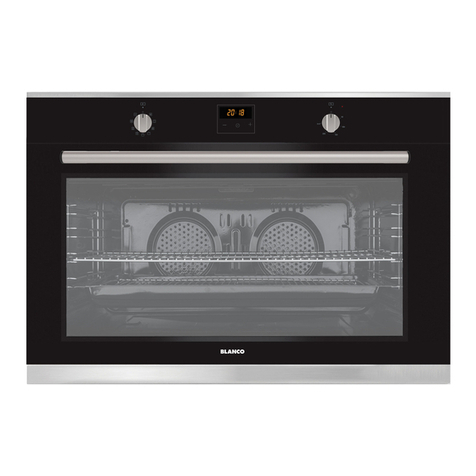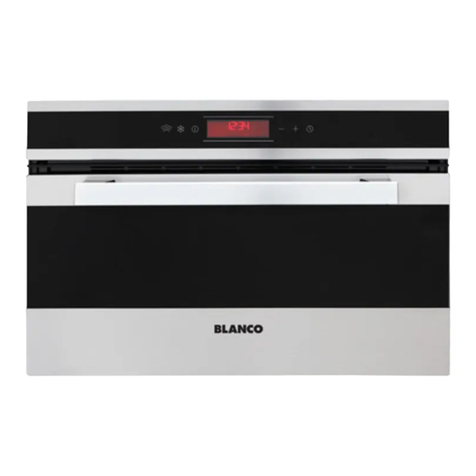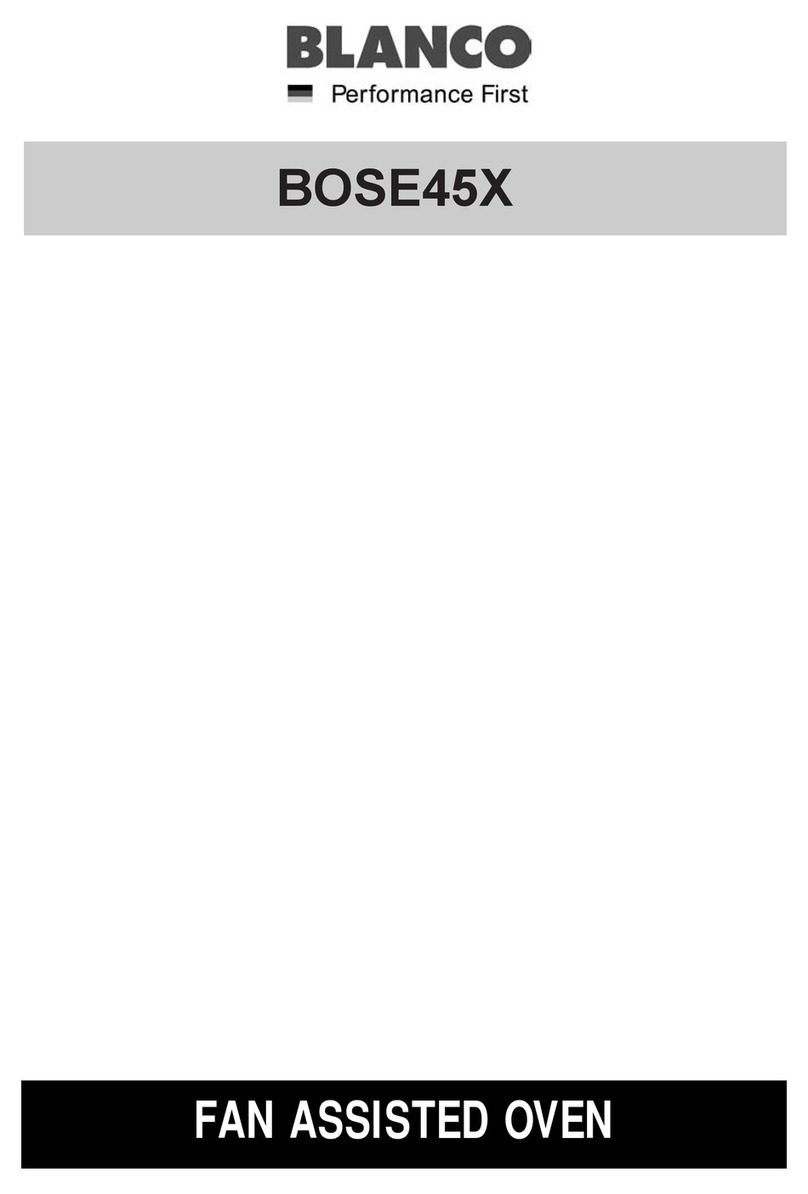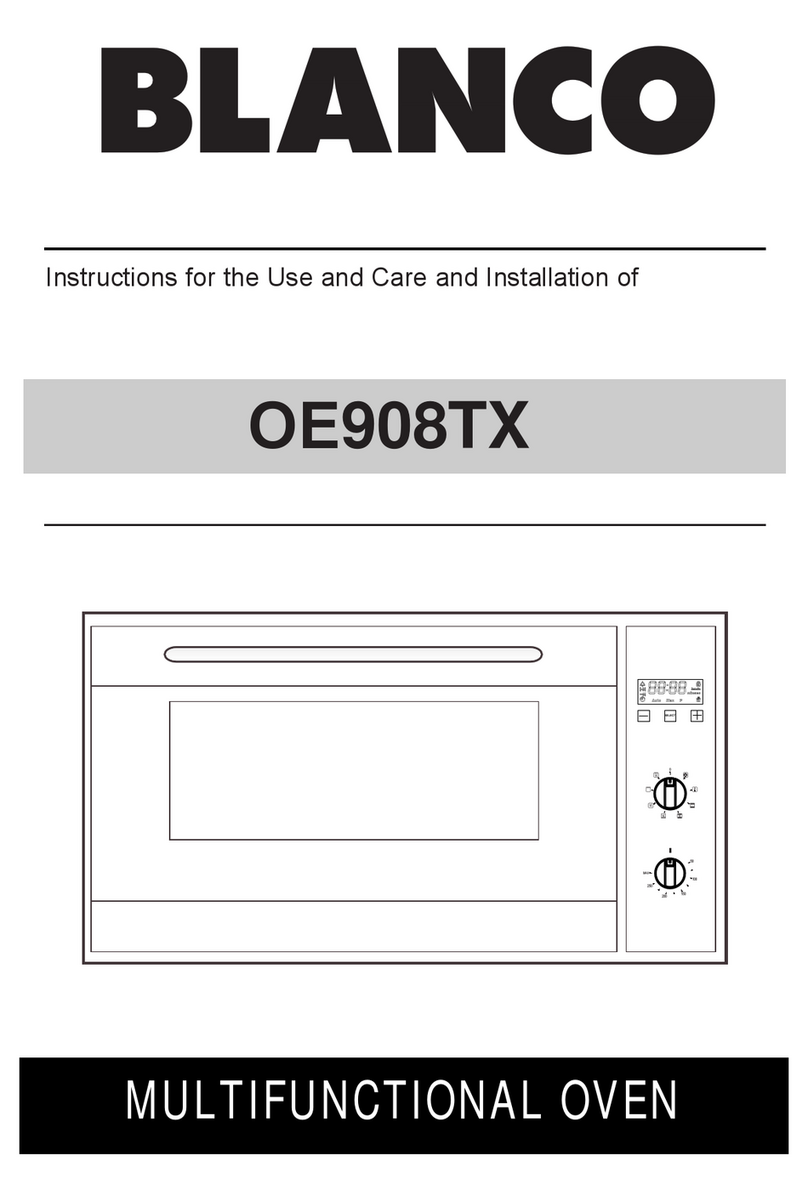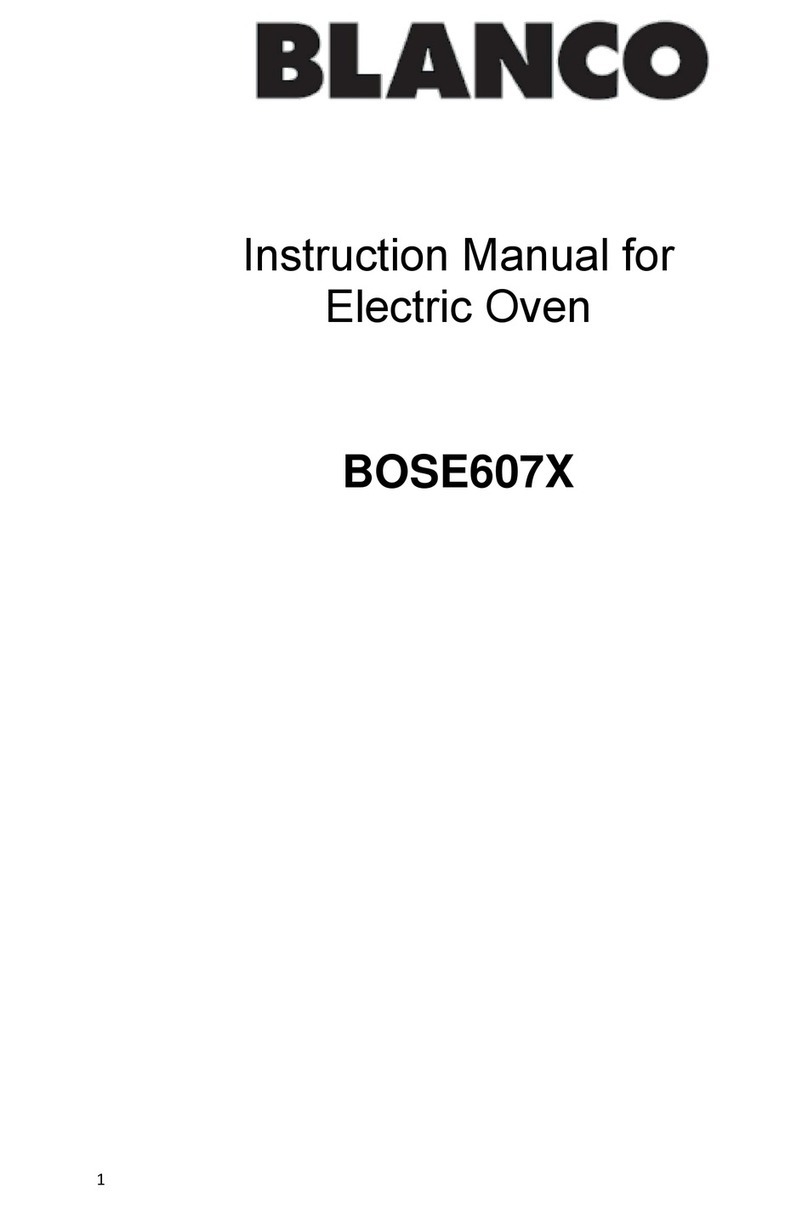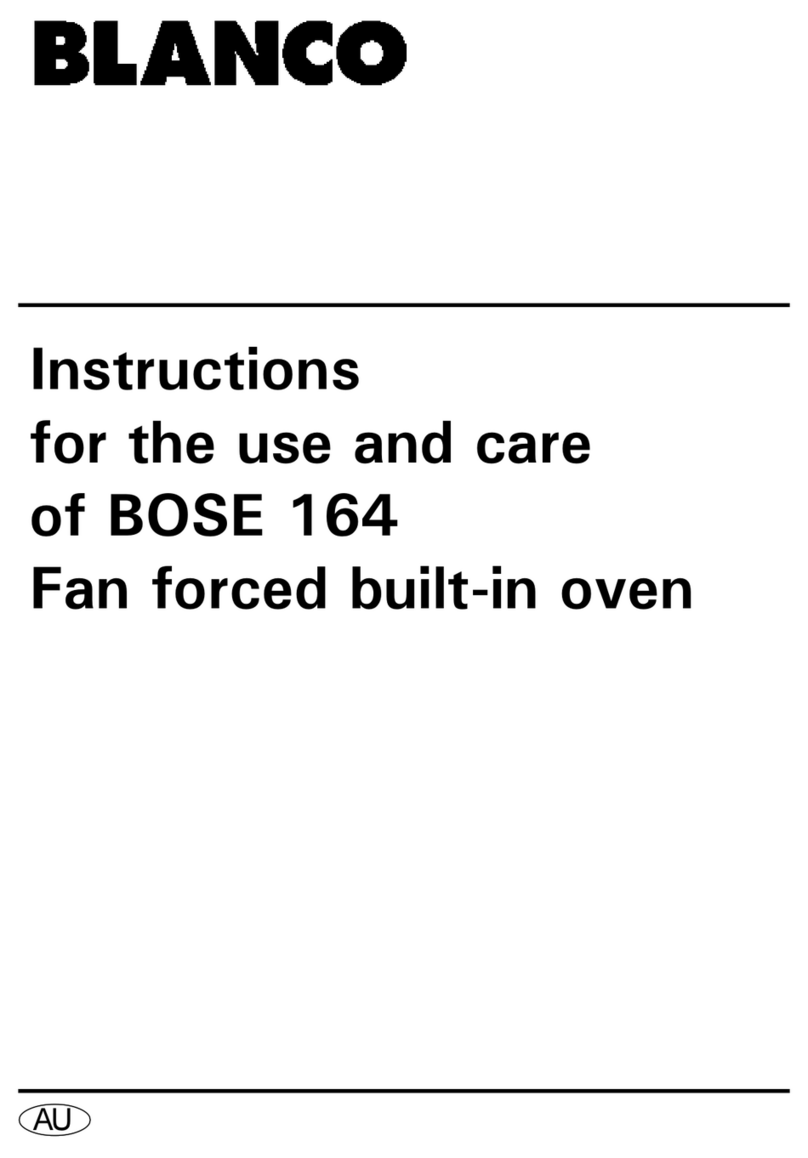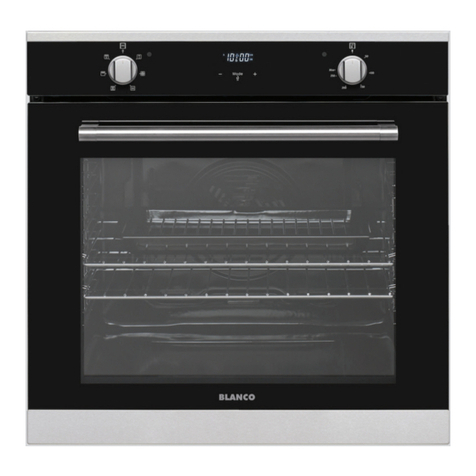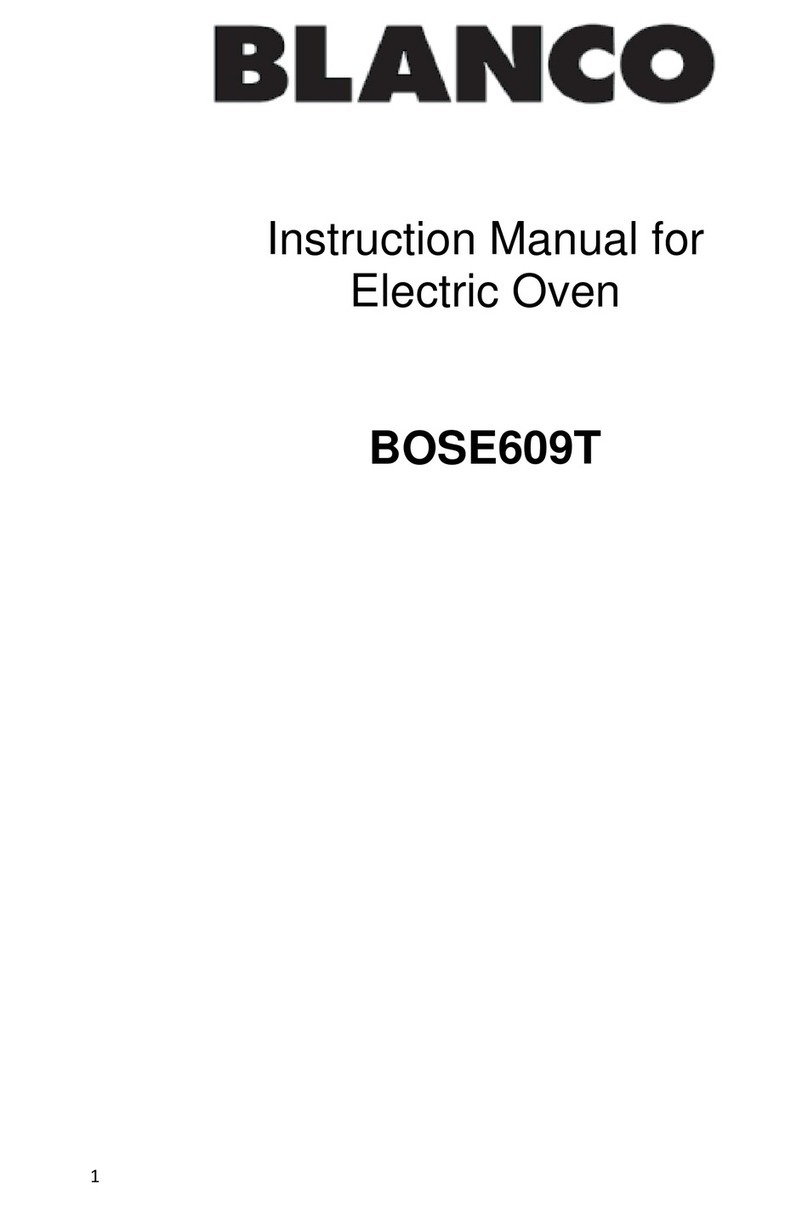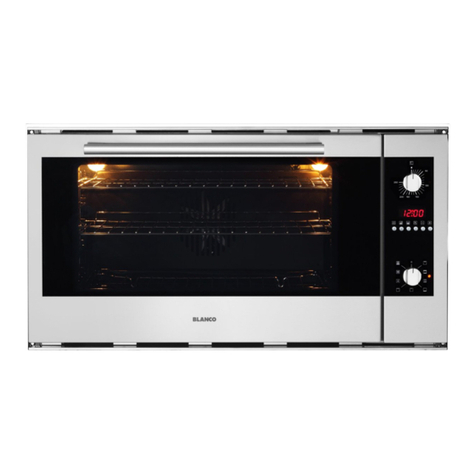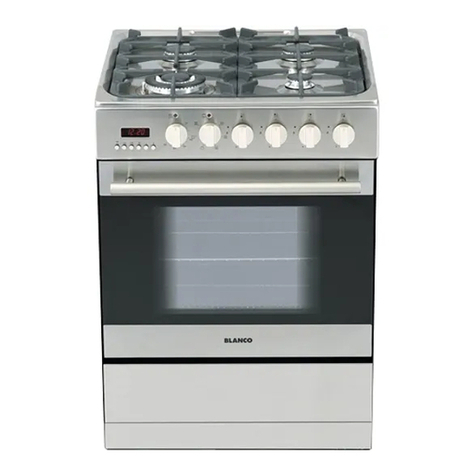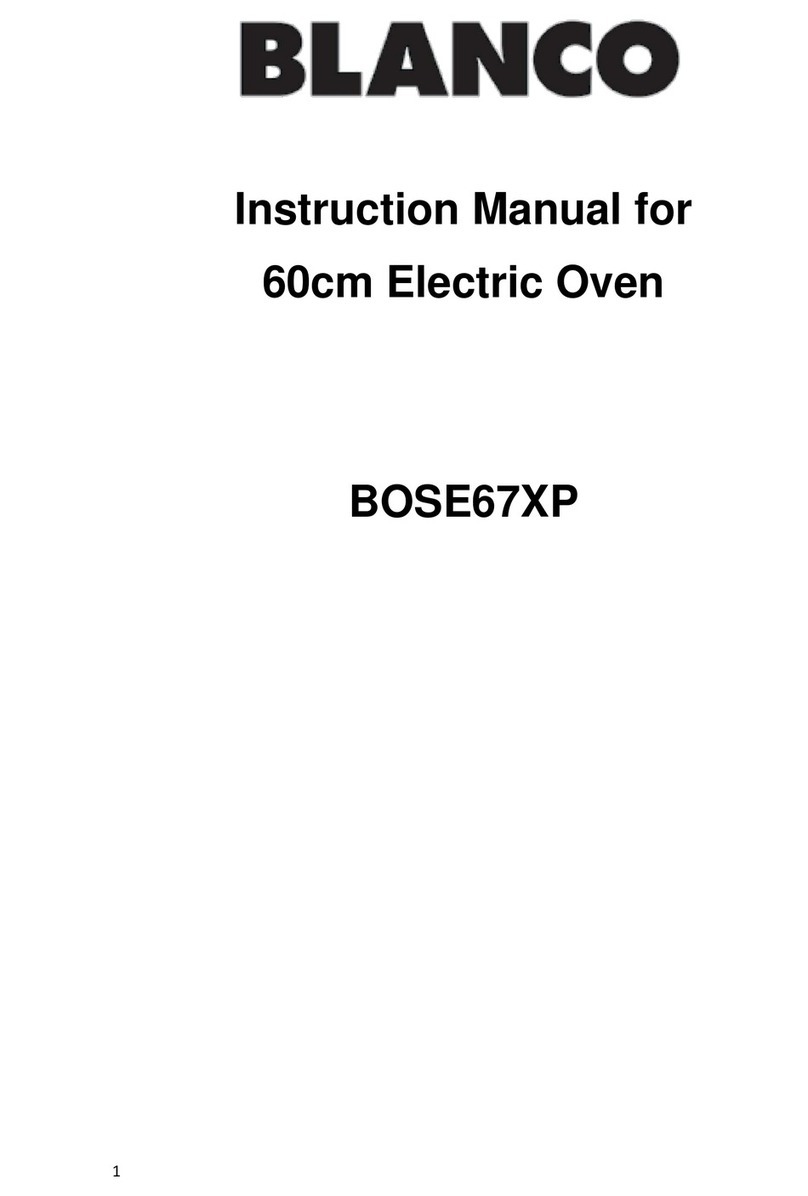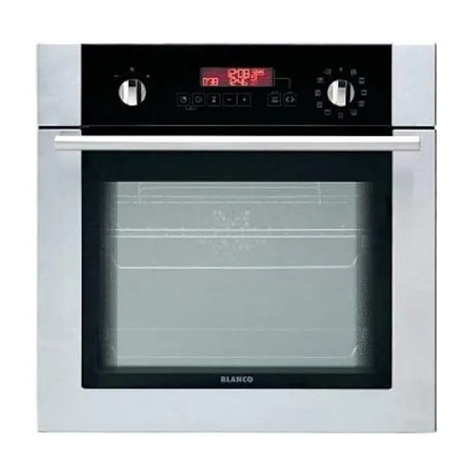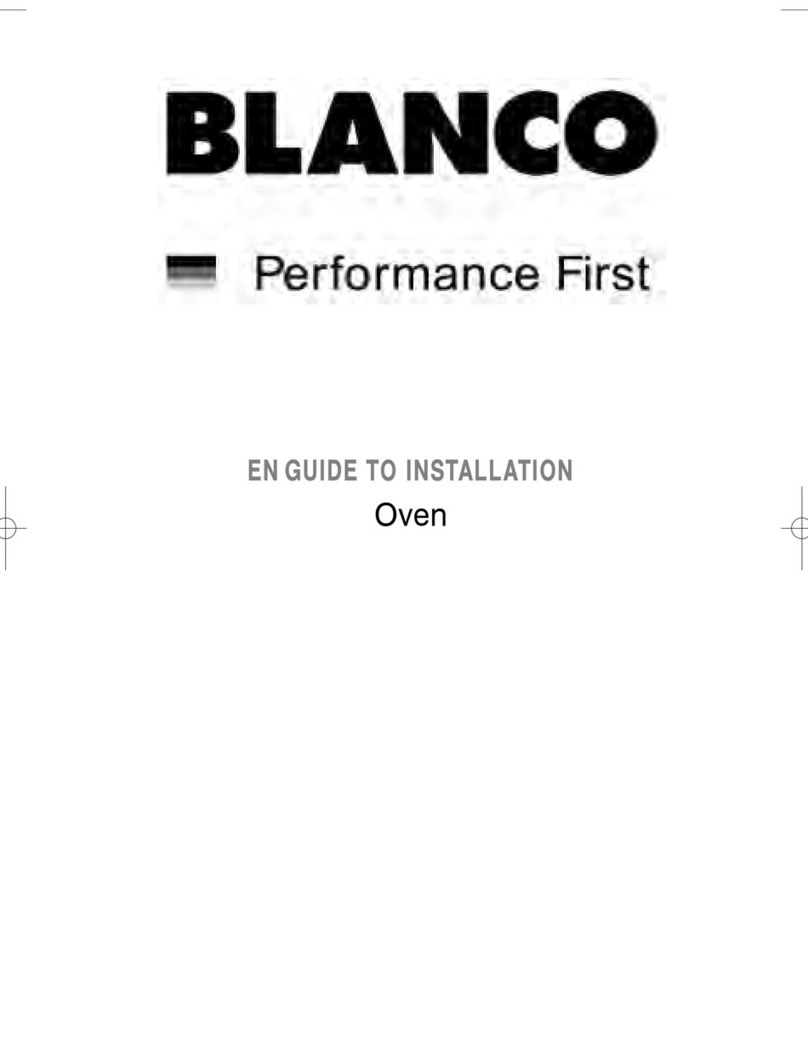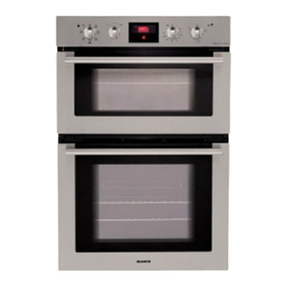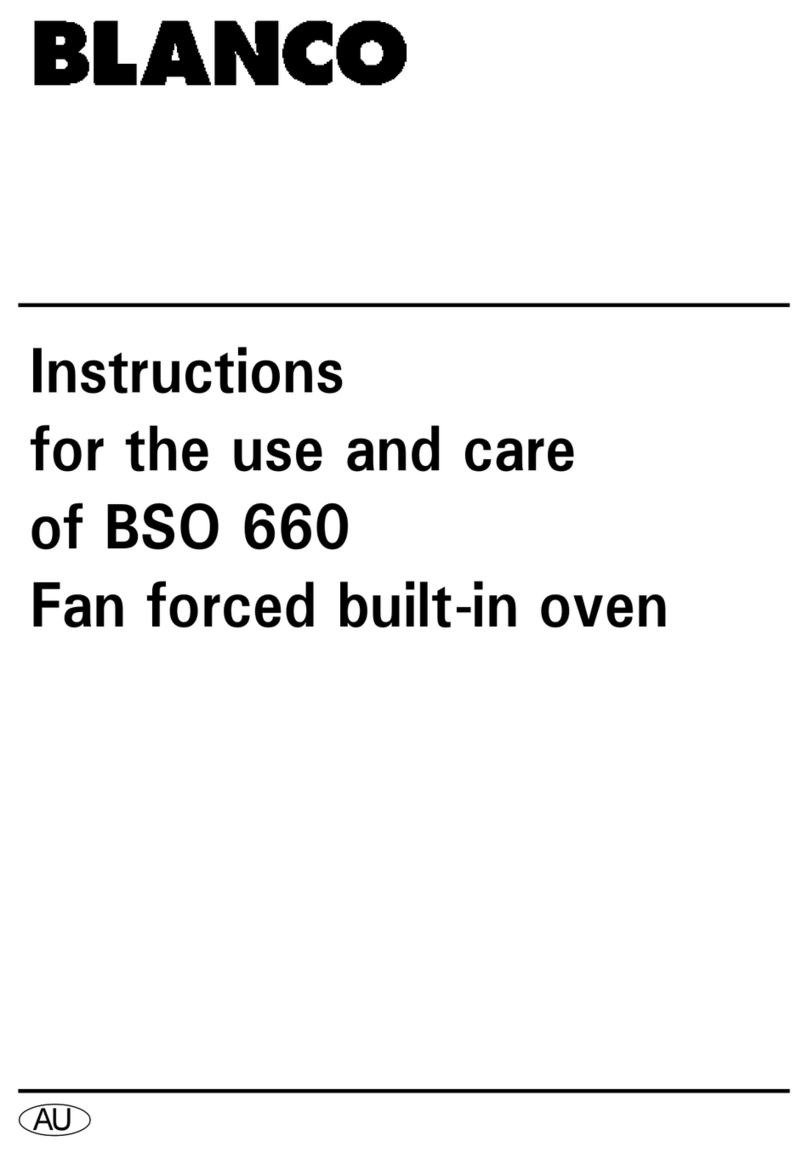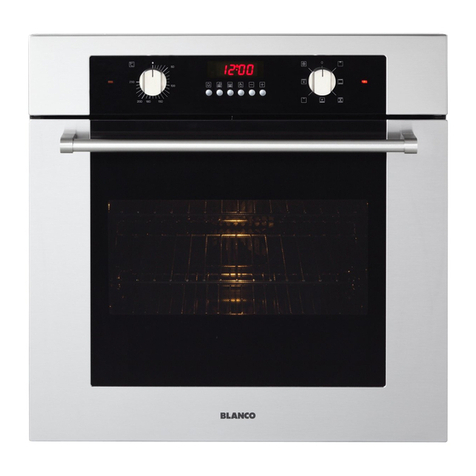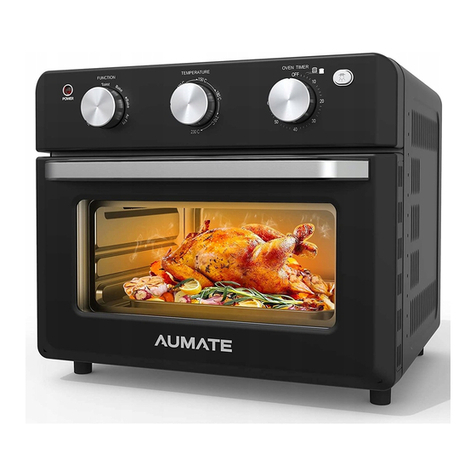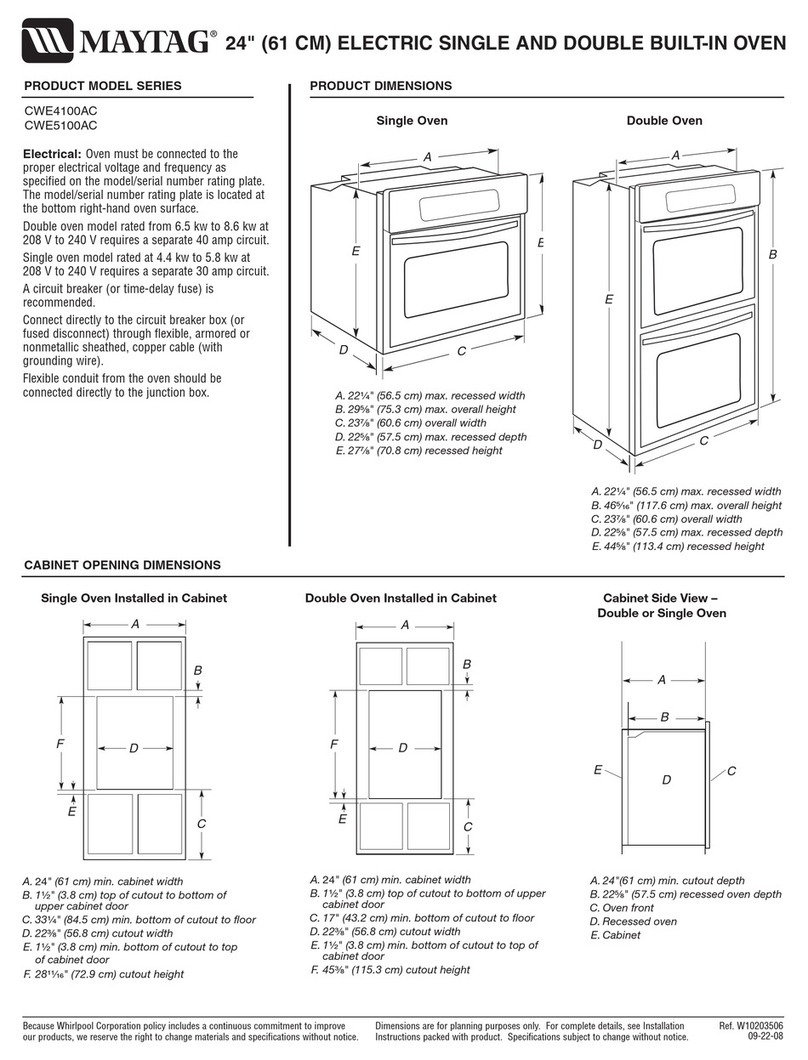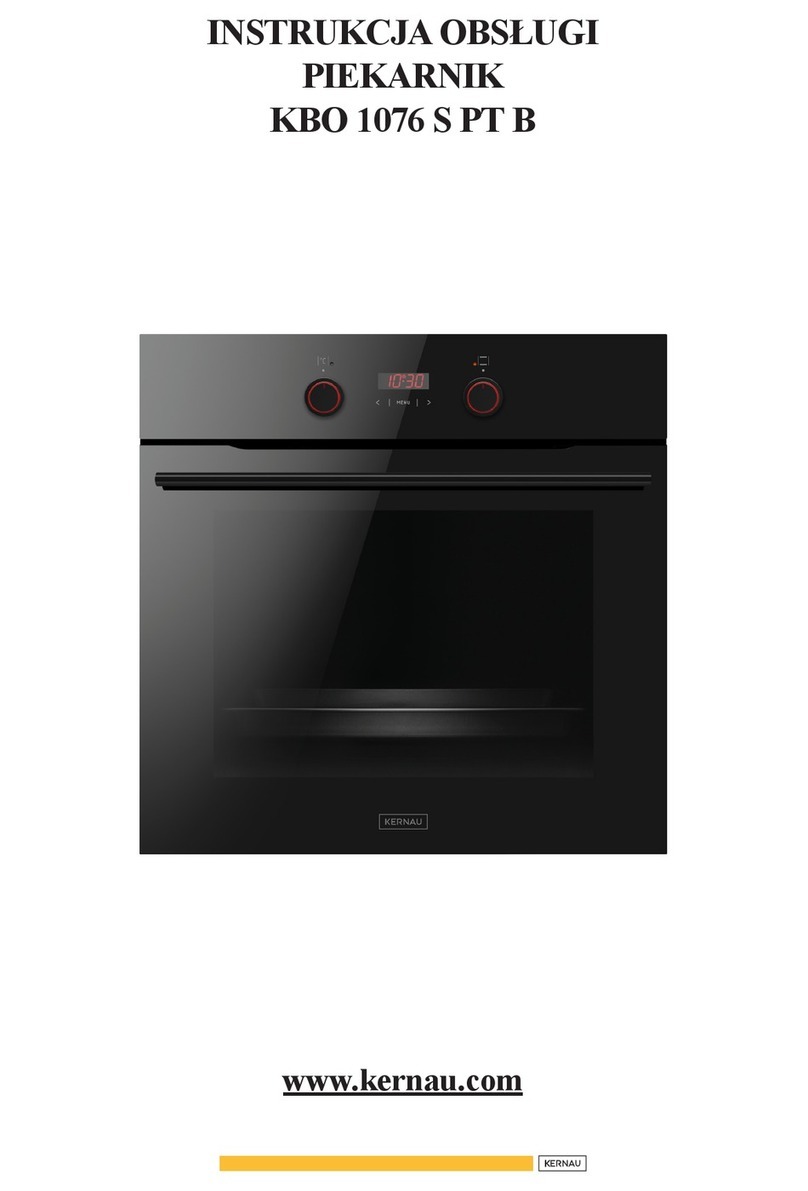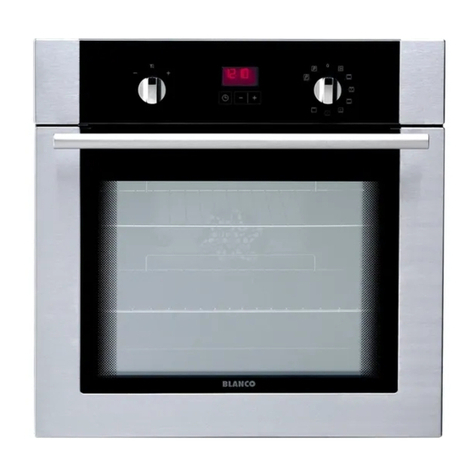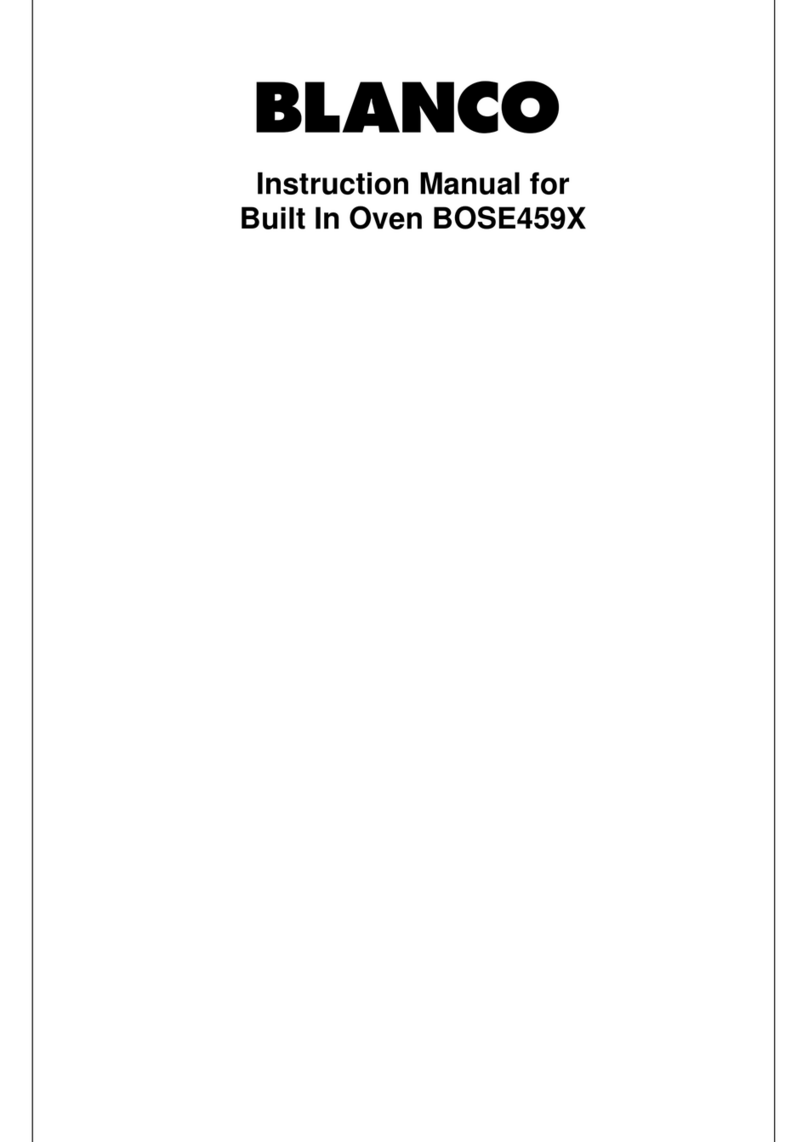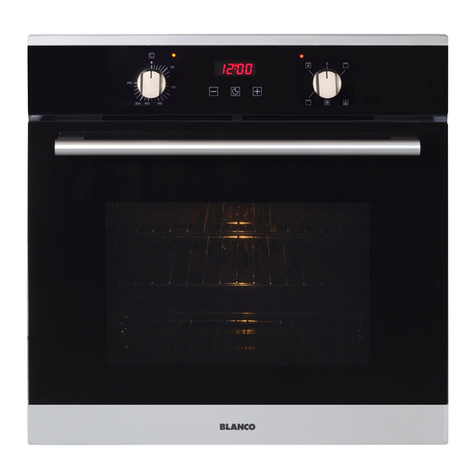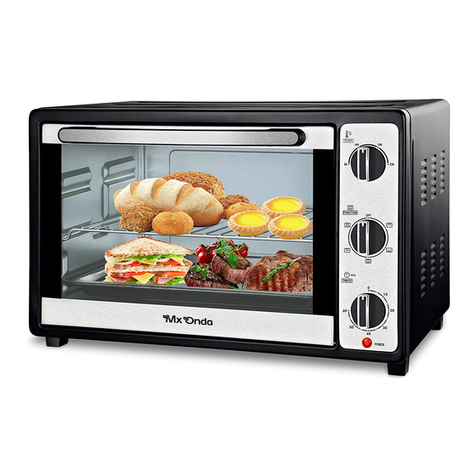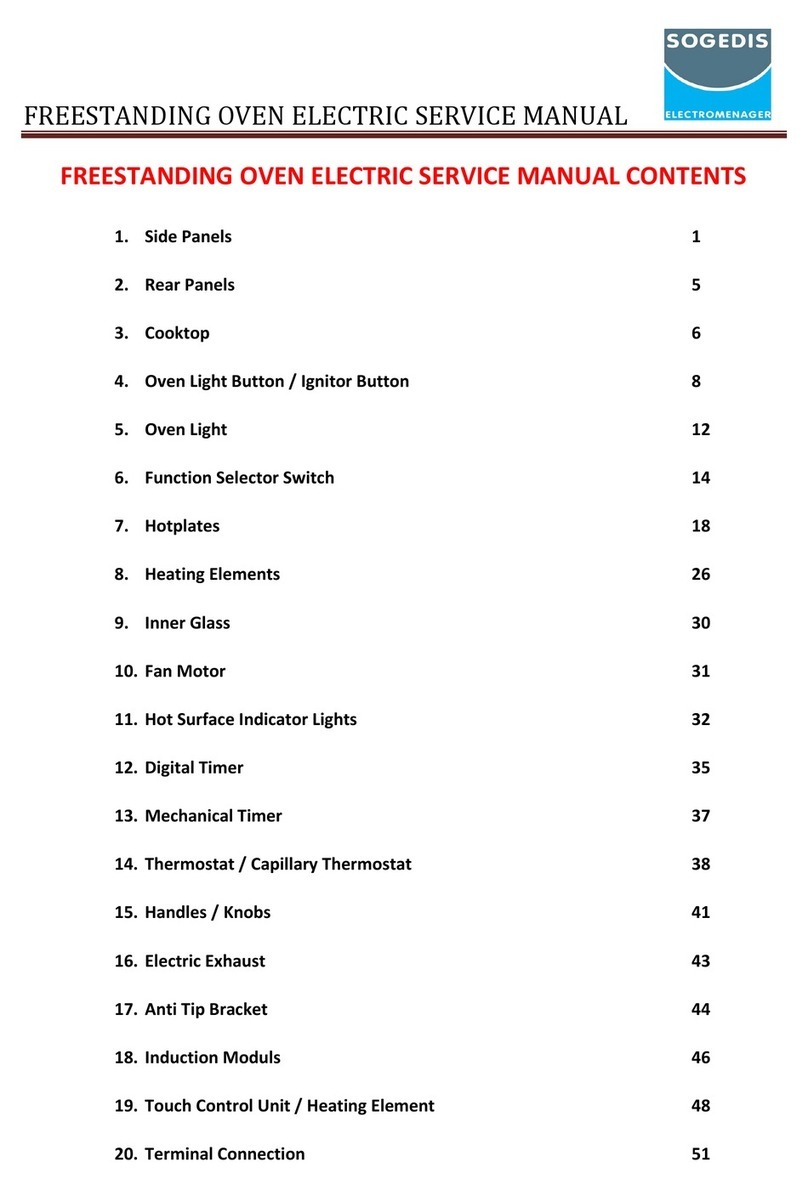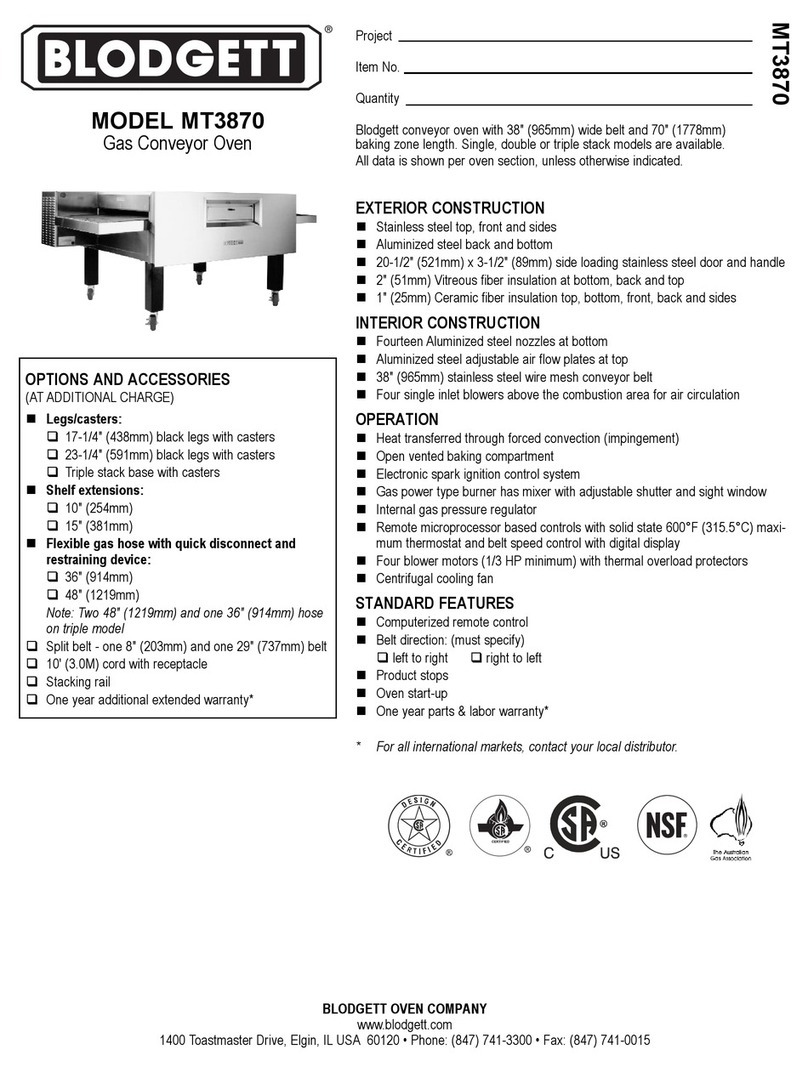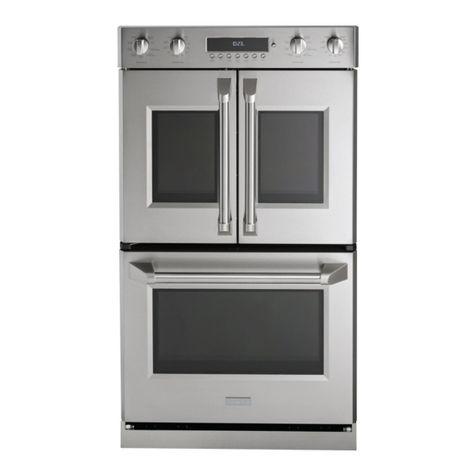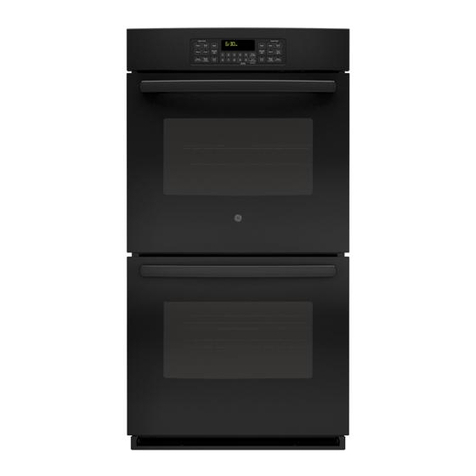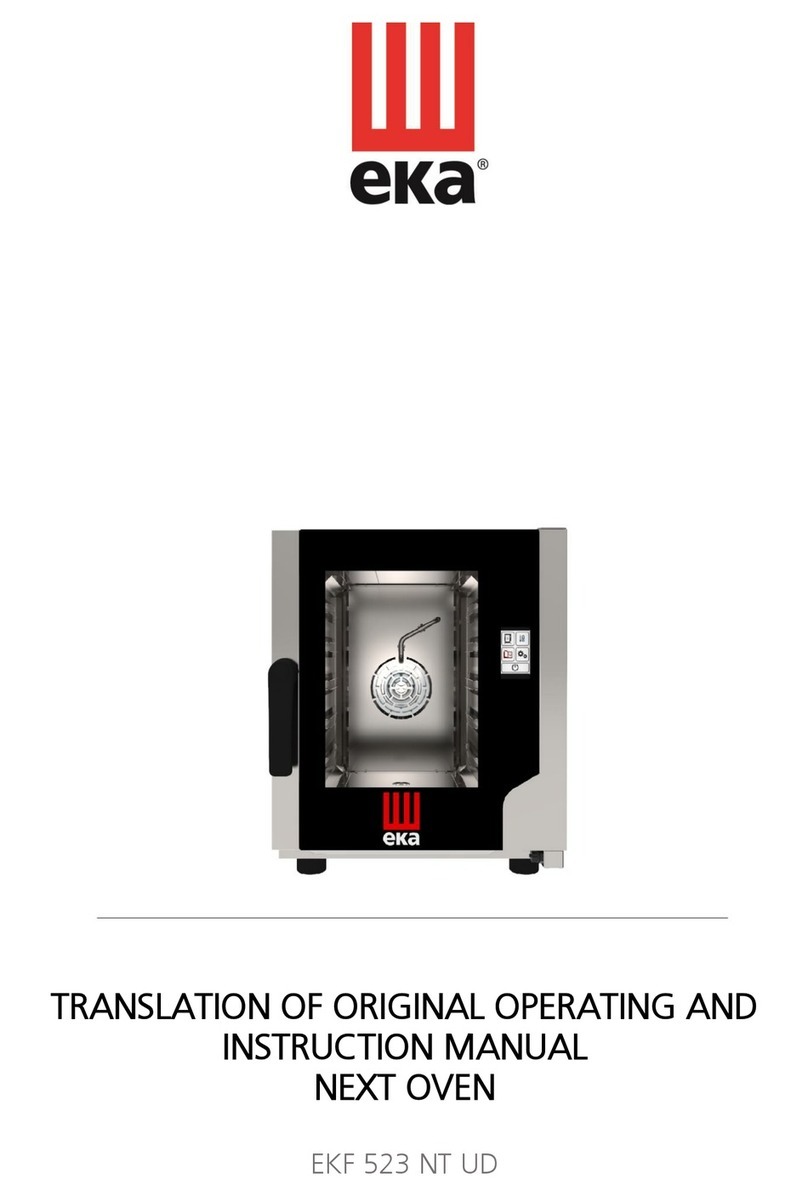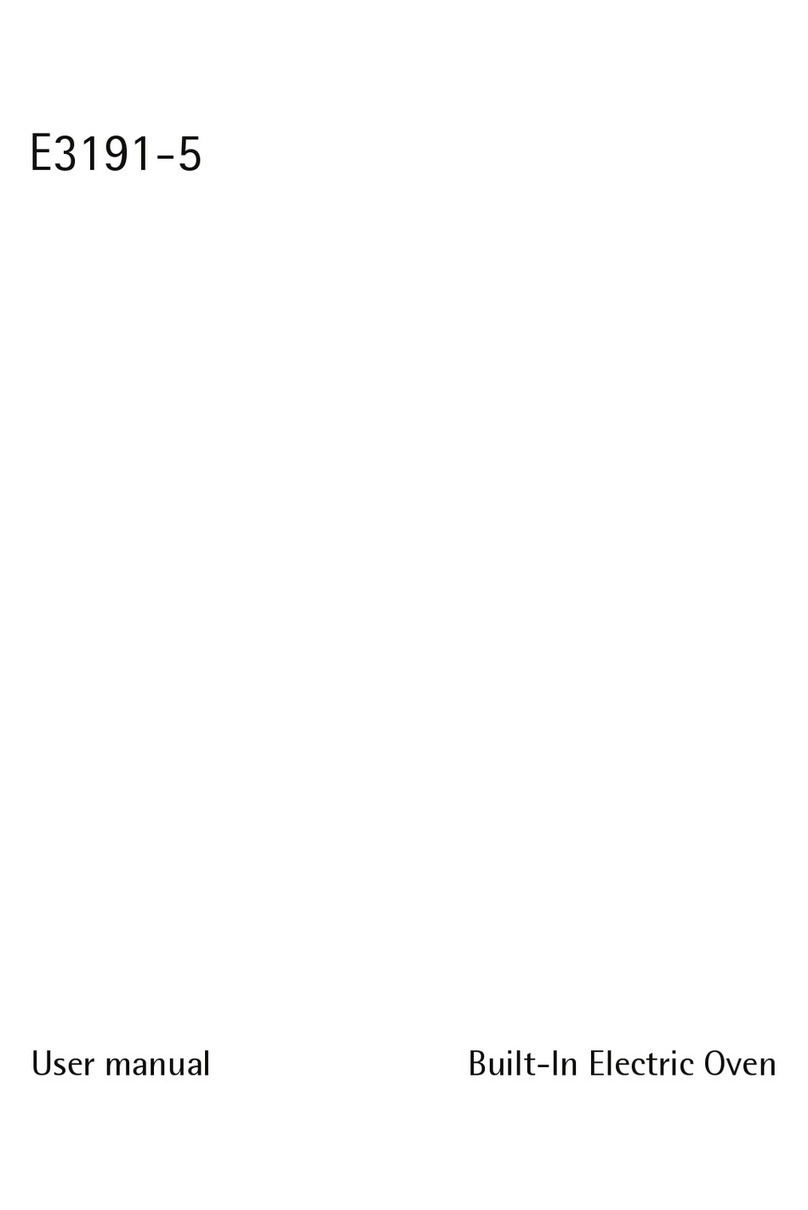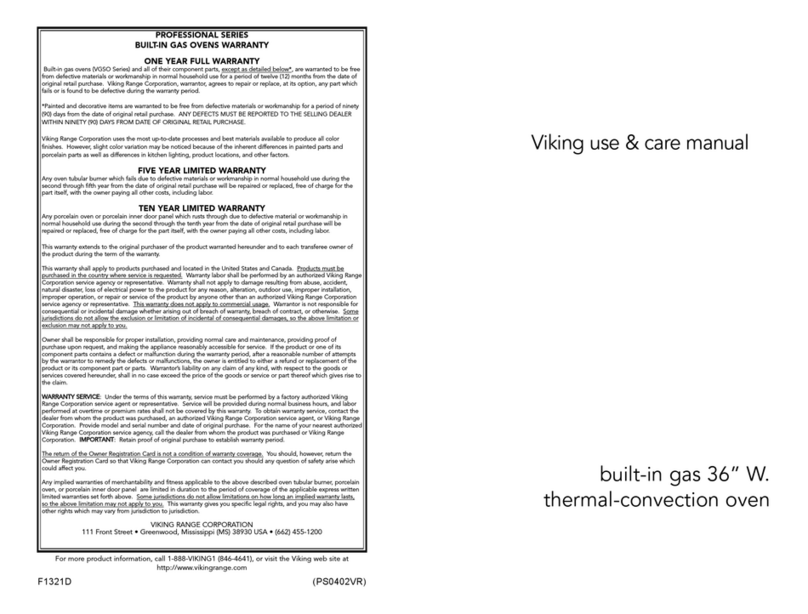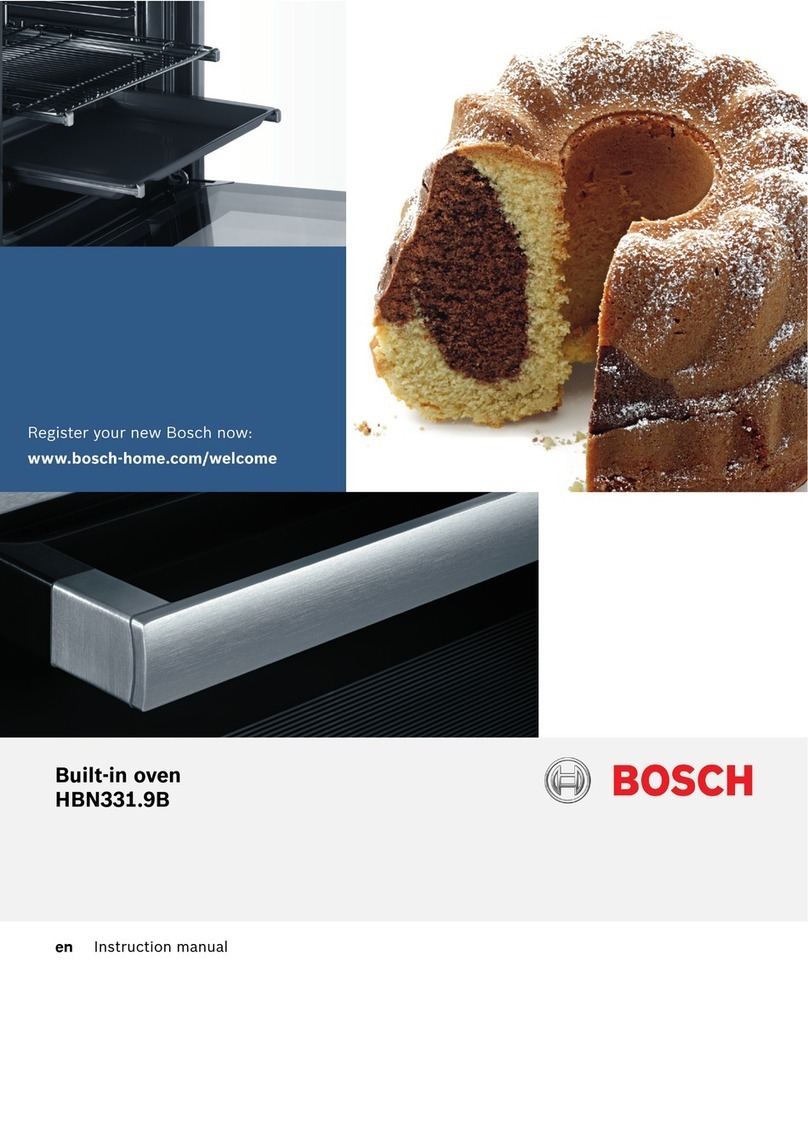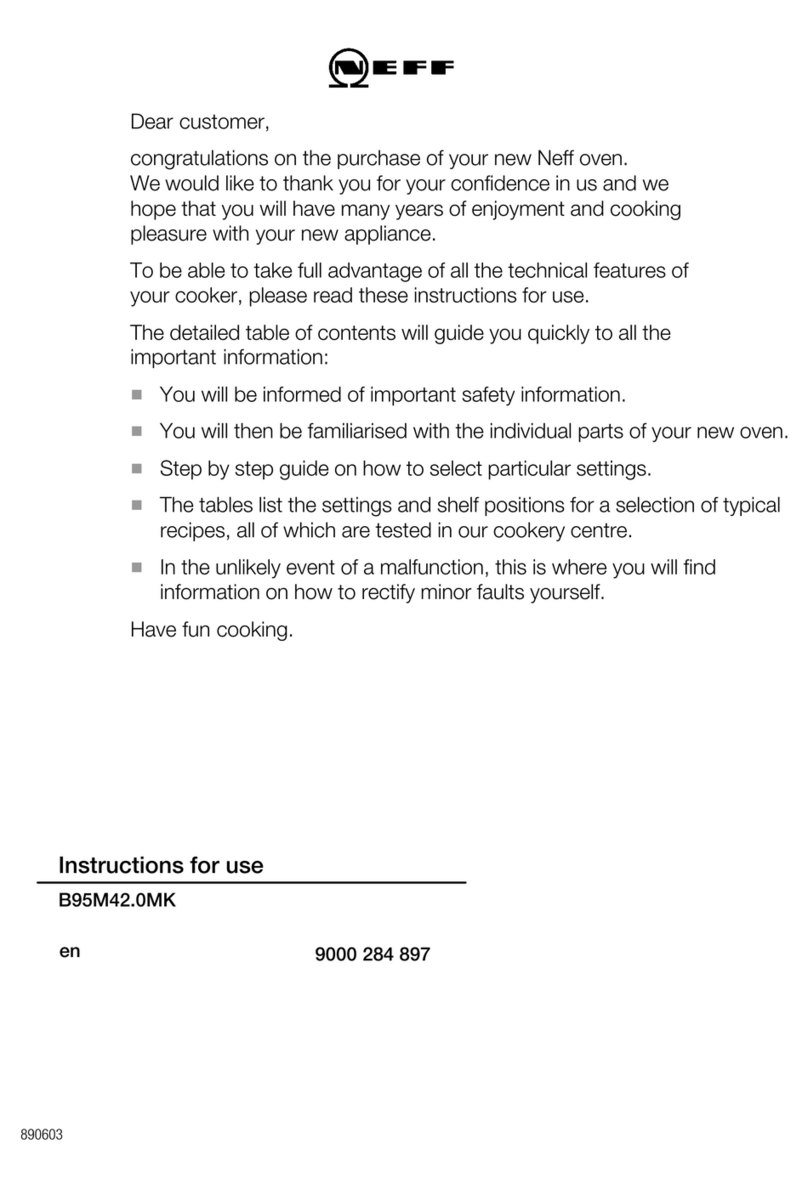
t
INSTRUCTIONS FOR COOKING
OVEN COOKINGS
For a perfect cooking
11
is recommended to pre~heatthe oven to the preset cooking tem-
perature.
Only vary fat meat can be placed into a cold oven. Never use low-edged containers nor
trays as baking-pan for roasts (fig.
5).
in order to soil the minimum possible the walls of
the oven,thus preventing lat splashes, sauce burnmg and smoke production. Use instead
high-edged
containers,
preferably terracotta containers, put on the grate at about hall the
height ol the oven. Some examples concerning the thermostat regulation and cooking
time lor the static functions are set forth in the special table. Please remember that when
uslng the ,ventilated functions. the present temperature is reached in a lesser time than in
the static function. On the contrary, with the same time, temperatures slightly above will
be reached. The cooking times vary according to the type of food, its homogeneity and
volume. We are sure that, after a few endeavours, the experience wiU suggest possible
variations to the values shown on the table.
Practical hintstosave energy
The oven can be switched offsome minutes beforecooking end, the residual temperatu-
re is enough to compiete cookmg Open the oven door only when it is absolutely neces-
sary, to check the cooking phase, look through the glass (the oven lamp is always on)
Pieces of eneral advice
tF]
The oven o ers various kinds of heating:
the
traditional
heating for the cooking of Special roasts
-
Iheventilated healingfor the cooking of cakes, biscuits and similar.
If
the ventilated hesting is chosen, it is recommended to takeadyantage of it for cooking
of roasts on more shelves or lor the preparation of complete menus, with time and energy
economy.
Ventilated heating
@J@w
Inthis way a continuous circulation of warm air is created.
This kind of heating is specially lit for the cooking on more shelves.
The temperature are inferior to the traditional ones, so sparing time and energy.
The oven has an instantaneous heat source, thus the present temperature is reached in
a
very short time. in order to differentiatethe heating inthe lower part, insertthe lowerhea-
tiny element urily.
Traditional heating
It is especially suitable forthe cooking of furred and feathered game and as well as for the
cooking of bread and sponge cakes.
It is advisable to insert the aliments to be cooked into the oven when this is reached the
cooking temperature, that is to say when the yellow warning light estinguishes.
INSTRUCTIONS FOR COOKING
GRILLCOOKINGS
@
To cook on the grill or onthe grate, pre-heat the oven for about
5
minutes. Duringgrill ope-
ration the heat comes from above: it is based on the infrared radiation and 1s flt lor low
thickness meat and for toasts. The meat and the fish to be grilled are to be slightly oiled
and always placed on the grate; this is to be arranged on the nearest or on the
farthest guide fromthe grill element, according to the thickness of the meat to be cooked.
The table shows some examples of cooking times and food positions. The cooking times
vary according to the type of food, its homogeneity and volume. Besidesthe door of the
oven should be kept ajar to givefree way to the vapours, inserting the heat shelter
(fig.
6)
andalways positioningthe tray under the grate to prevent fat dripping.
Caution:
Remove
the
heat
shelter
only
when
it
is
cold.
Prudence
is
recom-
mendedwhen
using
the
grill:
keepchildren away.
For a grill cooking of large pieces of meat and game
(1
to
2
Kg.), it is possible to combine
the grill function with the effect of the rear fan.
COOKING OF
THE
PASTRY
The air circulation of the oven assures an instantaneous and uniform heat distribution.
The forewarming of the oven is nolonger necessary. However for specially delicate pastly
the oven can be forewarmed.
More trays can be inserted into the oven together with the pastries, taking care not to use
the first grid starting from above. Together with the pastiy, also other aliments of different
nature can be cooked at the same time (fish, meat, etc.) without any transmission ofsmel-
ls and savours.
These multiple cookings can be carried out only provided that, although having different
cooking times, the aliments to be cooked have the same cooking temperature.
GRATlNATlNG
By this term is meant the surface alteration of an aliment, often forecooked, when, after
being introduced into the oven, it takes a golden-brown and crisp aspect.
"Gnocchi alla romana", polenta pasticciata", rice, lasagnas. noodles and vegetables dres-
sed with bechamel are typical preparation for this type of cooking.
REGENERATING
@
Beside regenerating any type of aliment, this oven is specially indicated to regenerate
bread,even ifthree or four days old. Restthe breadonthe grid, moisten itwith some drops
of water and let it into the oven for some minutes, adjusting the temperature at
220°C
-
250°C.
